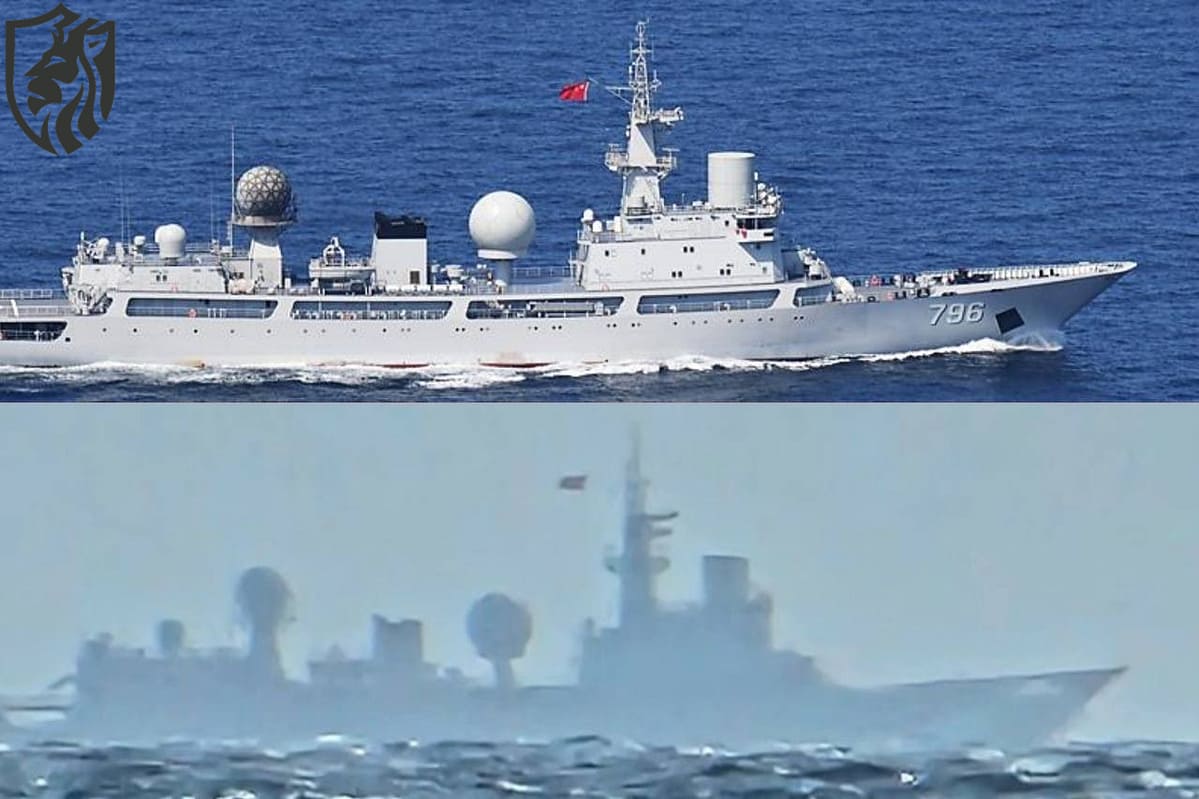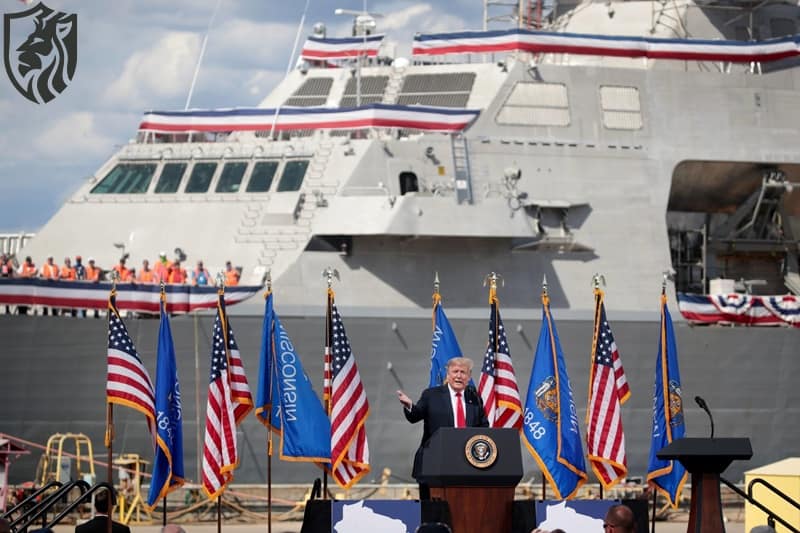
Chinese Navy Spy Ships in Persian Gulf
On 21 June 2025, reports emerged that China’s navy sent two advanced intelligence ships into the Persian Gulf. The move came shortly after the U.S. military’s Operation Midnight Hammer against Iran, increasing tensions in the region.
It signaled China’s growing naval presence in a strategically important and politically sensitive area. Some early observers believed China aimed to help Iran by sharing intelligence.
Evidence later suggested the ships’ main mission was to study U.S. stealth aircraft and electronic warfare tactics. The vessels deployed were Type 815A-class surveillance ships, carrying hull numbers 855 and 815A.
These ships can gather signals intelligence and monitor radar emissions with high accuracy. Their capabilities give China direct insight into advanced U.S. military operations.
This development caught the attention of defense analysts and the wider public. It highlighted the complex mix of technology, strategy, and global power politics in the Persian Gulf.
The deployment also raised concerns over China’s long-term ambitions in the region. The Gulf remains central to global energy supplies, making it a hotspot for strategic competition.
For centuries, nations have used intelligence ships to track adversaries’ movements and capabilities. This time, China appears intent on learning from one of America’s most sophisticated combat operations.
Cold War
During the Cold War, Soviet ships regularly tracked U.S. naval exercises in the Atlantic, collecting information on radar technology and communications habits. Similarly, U.S. spy aircraft, like the RC-135 Rivet Joint, patrolled Soviet border regions to intercept signals from Soviet Pacific military exercises.

Recently, Russian intelligence ships stayed off the Syrian coast during Western attacks in 2018, observing NATO strategy and electronic warfare approaches.
China has employed this tactic by sending surveillance ships to observe U.S.-led missions in the South China Sea, such as the 2022 Rim of the Pacific exercises. This approach allows nations to gain critical intelligence without a confrontation, which strengthens their technologies and approaches.
For example, monitoring an enemy’s stealth air operations can unveil weaknesses in detection capacity. China’s Persian Gulf operations fit this long-standing practice, as it aims to analyze U.S. strategy within a high-risk operation. This strategy, instead of being cutting-edge, is a classic approach for great powers assessing the capabilities of their competitors.
China’s strategic interests in the Persian Gulf
The deployment of Chinese surveillance vessels to the Persian Gulf is a strategic step to further its military and geopolitical interests.
The PLAN is primarily interested in tracking Operation Midnight Hammer, the US attack against Iranian nuclear facilities, to learn American tactics.
The operation’s deployment of B-2 Spirit stealth bombers and electronic warfare equipment gives China a unique opportunity to gain access to advanced U.S. technology.
Besides tactical intelligence, China desires to defend its economic interests in the region because it is highly dependent on Persian Gulf oil imports.
By deploying a naval presence, Beijing is now a global player capable of shaping regional dynamics. The deployment is made at a time when China has begun to improve its satellite-based reconnaissance capabilities over stealth platforms, which are at the forefront of its military modernization agenda.
The strategic position of the Persian Gulf, adjacent to the Strait of Hormuz, provides further rationale for this action, as dominance of this chokepoint has a global impact upon energy markets.
The action by China is opportunistic and strategic in nature, enabling it to gain experience from U.S. operations and extend its naval reach.
Technological dimensions of China’s intelligence networks
Sophisticated electronic intelligence-gathering systems equip the Type 815A-class vessels, the mainstay of Chinese forces in the Persian Gulf.
The vessels boast advanced sensors and antennas that track radar emissions, communications, and electromagnetic radiation across a broad spectrum of frequencies.
These capabilities allow the PLAN to monitor the flight patterns of aircraft, including stealth aircraft such as the B-2 Spirit, by studying the signatures of their support systems.
The vessels also allow for satellite monitoring, transmitting intelligence to China’s space-based assets for immediate examination.
Type 815A, with its long-range radar sensing capabilities, can detect and identify military activity hundreds of miles from the coast, providing China with a wide view of U.S. operations.
These ships address the dilemma of monitoring advanced enemies by combining signals intelligence with cyber tools, thus potentially jamming enemy transmissions when needed.
The Type 815A has better sensitivity and information-processing abilities than earlier models, thus improving China’s capacity to decode complex American plans.
To defense enthusiasts, these ships represent a major leap in naval intelligence, combining stealth technology with advanced technology to revolutionize the way countries capture battlefield intelligence.
Operation Midnight Hammer
Operation Midnight Hammer began on 21 June 2025, showcasing the United States’ power in a precise, coordinated strike. The mission targeted three key Iranian nuclear sites—Fordo, Natanz, and Isfahan—in a single, calculated assault.
Seven B-2 Spirit stealth bombers led the attack, each carrying a massive 30,000-pound GBU-57 bunker-buster bomb. These bombers penetrated some of the world’s most heavily protected facilities with remarkable precision and speed.
General Dan Caine, Chairman of the Joint Chiefs of Staff, highlighted the mission’s extraordinary coordination and complexity. A total of 125 aircraft, including decoys and escorts, worked together to mislead and overwhelm Iranian defenses.
An American submarine launched over twenty Tomahawk cruise missiles at Isfahan, crippling air defenses before the bombers arrived. Electronic warfare aircraft jammed Iranian radars, ensuring the B-2 bombers remained invisible throughout their mission.
The GBU-57 bombs were used for deep penetration, destroying Fordo’s underground uranium enrichment facilities. The operation combined stealth, precision, and deception in a way that impressed even seasoned military observers.
Chinese analysts studied the mission closely, noting how it demonstrated the U.S.’s ability to defeat advanced air defense systems. Its success explains why potential rivals, including China, seek to learn from such high-level, complex military operations.
Russian and foreign interests
Russia, as well as other international players, is watching Operation Midnight Hammer closely in terms of both its technical and strategic implications.
Russian experts would be interested in the performance of the GBU-57, its range of dispersal, and its ability to deliver successive ordnance for penetration to the center. This information could potentially lead Russia to develop similar ordnance or countermeasures.

The mission also attracts attention from the Gulf states, who are wary of China’s naval presence in the area near the Strait of Hormuz, a crucial pipeline for oil exports.
The European powers, concerned about regional stability, see China’s intelligence collection as a possible catalyst to further tensions. Chinese naval presence can trigger debates within NATO on how to react to non-Western intelligence collection in critical areas.
Speculation is that Russia and China would exchange data gathered with one another through their mutual exercises, such as Maritime Security Belt 2025, to synchronize strategies.
This global analysis is examining the implications of the operation globally, since countries are re-evaluating their military strategy and alliances in reaction to U.S. moves and China’s aggressive intelligence activities.
U.S. reactions to intelligence operations
The United States military actively counters Chinese as well as possible Russian intelligence gathering in the Persian Gulf. During Operation Midnight Hammer, commanders used decoy aircraft to mislead observers about the B-2 strike package’s route.
General Caine confirmed that U.S. fighters cleared the bombers’ path, destroying Iranian surface-to-air missile threats. To counter possible Iranian mining of the Strait of Hormuz, the U.S. deployed minesweepers and other naval assets.
Frequency-hopping and encryption communication systems shielded U.S. activity from Chinese Type 815A ship intercepts. These activities are a demonstration of a general U.S. policy to ensure technological dominance in the presence of increasing competition.
America conceals its stealth fighters and tactics, making it difficult for its enemies to gather intelligence. This cat-and-mouse game highlights the sophistication of war in the modern era, when the secrets of operations are as vital as the act of attack. Defense analysts say these precautions enhance U.S. deterrence, so China is unable to fully read American intentions.
Geopolitical implications and potential repercussions
Chinese espionage in the Persian Gulf carries major geopolitical consequences, reshaping relations among global powers. The move has increased tensions between China and the U.S., with Washington viewing it as a challenge to its dominance.
Gulf states, wary of China’s growing influence, are closely watching Iran despite potential intelligence gains for Beijing. A 2025 Pentagon report warns that using Type 815A vessels could lead to permanent Chinese bases in the Middle East.
The U.S. may need to adapt operations, using more electronic decoys and secure communications to protect sensitive missions. If Russia joined such efforts, its partnership with China would strengthen, complicating Western strategic plans.
China could use lessons from Operation Midnight Hammer to advance anti-stealth technology. Such progress would reduce America’s long-held technological advantage in modern warfare.
This development signals a new phase in global military competition. It challenges both policymakers and the public to grasp its full implications in an era of renewed rivalries.
References
- Defense News Today—Coverage of Operation Midnight Hammer
- Facebook—Pakistan Defense Forum Discussions
- Naval Technology—Type 815A Surveillance Ship Overview
- CSIS—China’s Expanding Naval Presence
- Reuters—Strait of Hormuz and Global Oil Trade
- US Department of Defense—Operation Reports
- RAND Corporation—U.S. Airpower and Strategic Bombing









